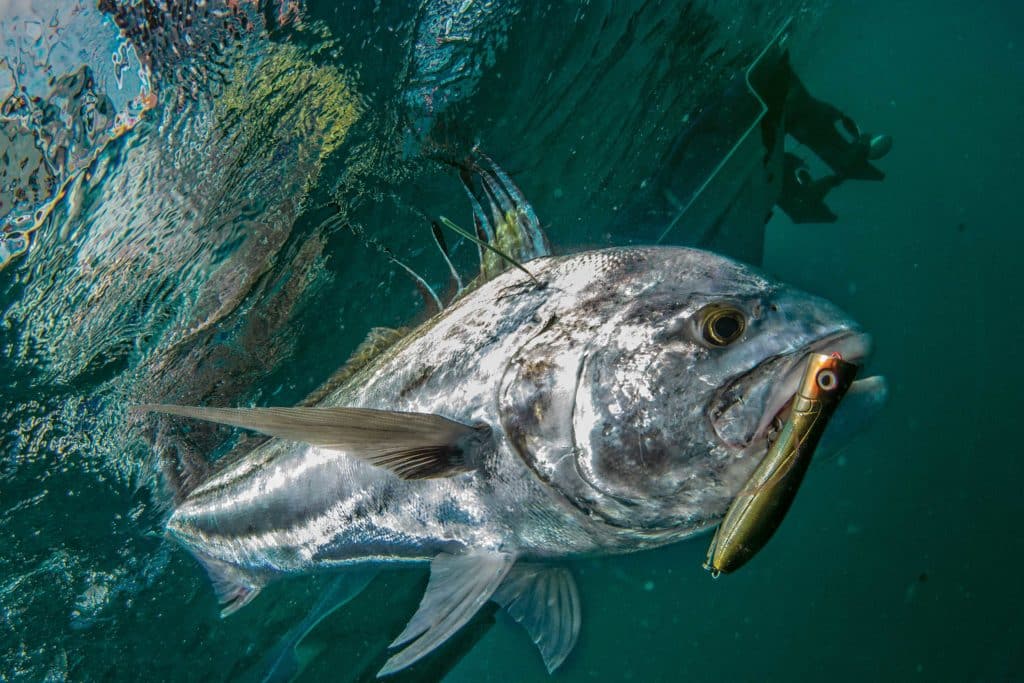
What attracted me to the small fishing community of Los Barriles on the East Cape of Baja was the staggering variety of inshore and offshore gamefish. I’ll gladly take the striped marlin, sailfish, dorado, yellowfin tuna, wahoo, pargo and the rest of the 80 varieties of gamefish here, but it’s the black-and-white-painted faces of roosterfish that make me tremble.
Size- and tackle-wise, roosters are middleweights. Strikingly gorgeous, predatory, selective and powerful, they grow to 5 feet and 110 pounds, and are endowed with bull-like shoulders and a tail that screams speed. To target them in this part of the world, you can fish from a boat or from the beach.
Spot the seven long spines in a roosterfish’s comb waving through aquamarine water over dark rocks plainly visible 20 feet down, present a mullet, sardina or a half-foot of fly on the surface and, like me, you’ll probably forget to breathe while the panga drifts and the black-striped predator stalks.
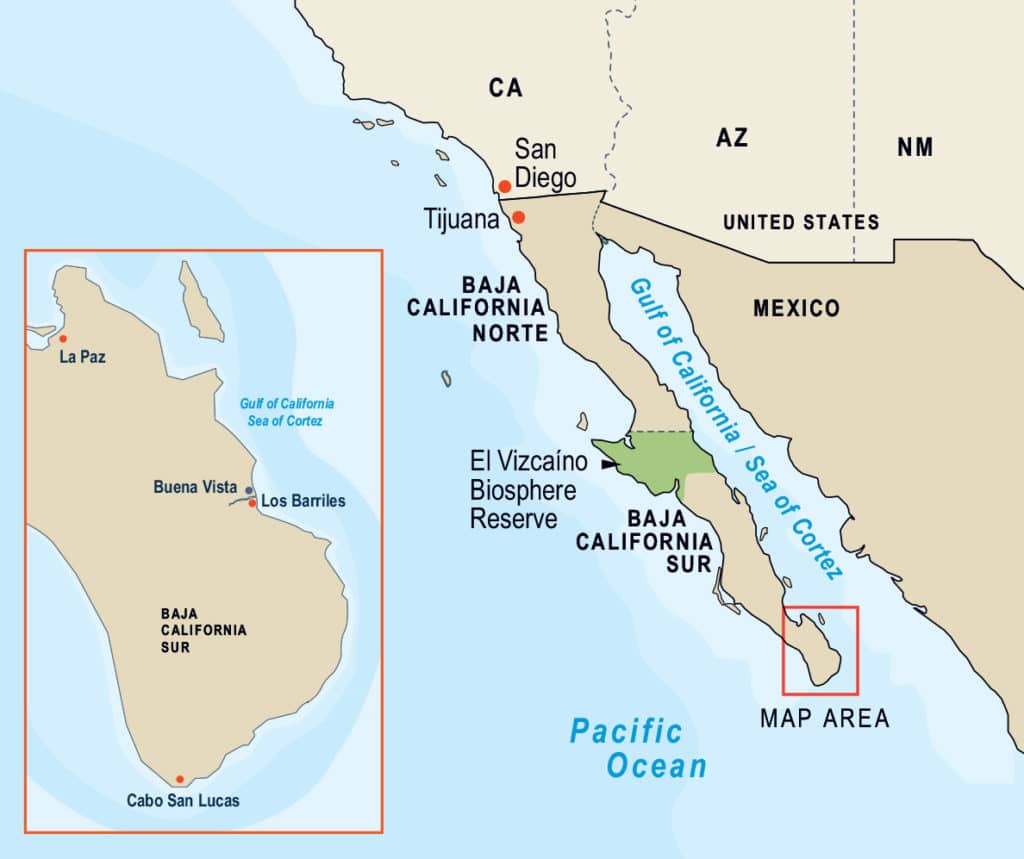
Or run the miles of open beach in a rented quad until you spot a roosterfish’s shadow in the transparent shallows, and then it’s run-and-gun time. You bale out of the quad, grab the fly rod from the bumper rack, and race like a barefoot madman through white sand to get ahead of the moving fish. You strip fly line on the run before plowing into knee-deep water and throwing a big streamer on a 12-weight with all you’ve got, hoping the cast hits the mark.
Fishing from a panga, Merry Waugh, a Baja Flyfishing Company guide, lip-hooks a foot-long mullet and tows it as an attractor behind the boat in 20 feet of water. I pull line off the fly reel, coil it out of the way, and wait for something to cast to. Soon, two roosters appear behind the teaser, light up, and charge the mullet. But at the last possible second, they veer away.
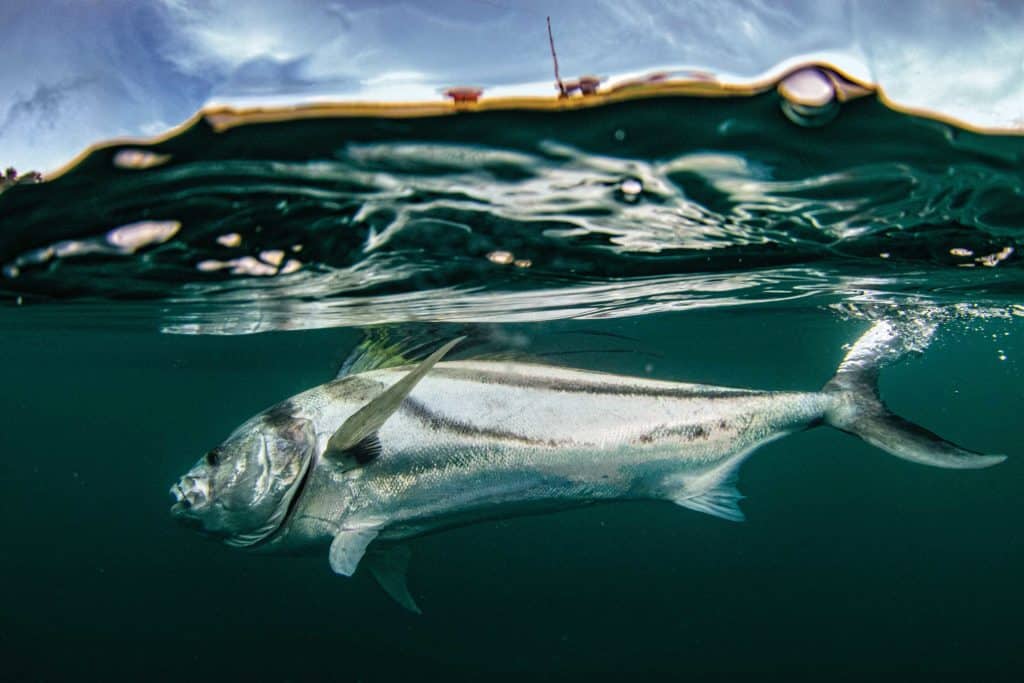
A handful of sardina chum flies over my head and into the wake, tolling more roosters to Waugh’s mullet. One fires up and races to the bait. Crouched and poised, I sweat into my sunglasses while holding a 9-weight rod armed with 6 inches of brown deer-hair streamer at the ready, waiting for the signal to cast.
The rooster attacks, Waugh jerks the mullet teaser clear, and I cast—a short, tight loop that drops the fly exactly where the live mullet had been. The largest fish charges, its comb flying and black stripes glowing. Then it simply stops—suddenly, inexplicably stops and sinks. The other fish are still looking for the disappearing mullet. “Cast again, cast again,” fly-fishing guide Mike Rieser begs.
Too late. When roosters are the target, I’ve got exactly one chance to make a good cast. By the second one, I’d tipped into full-blown roosterfish fever, grown 10 thumbs, and hyper-zinged. Fly line tangles overhead, wrapping around guides, the leader collapses on the Bimini knot, the fly flops, and the roosters split. It’s minutes before I remember to cuss.
In the Roosterfish Capital of the World, luck is ordained to change, and a day later, it did. On the small cruiser Balli-Hoo, fishing with baitcasting tackle off the old lighthouse at Punta Arenas, a 60-pound rooster ate my live mullet as I free-spooled the bait into position for trolling. The big fish blasted in from out of nowhere, a slashing, striped apparition with its comb flying. It inhaled the 10-inch mullet, hooked itself and ran while the reel was still in free-spool. In an instant, my thumb blistered and a backlash went deep into the spool. We had but one option: chase the fish.
Clutching the jerking rod, I barefooted up the narrow gunwale cockpit toward the bow, lurched out on the bowsprit, pointed the rod at the fish, and hung on while the cruiser gave chase, praying we’d catch up before the outpouring line reached the backlash. We gained, then lost line, regained some, and lost it again. Skipper Cao was playing the throttles expertly, matching the raging rooster step for step. In the middle of this craziness, the mate leaned around me to dig into the backlash.
“Big fish. Very big fish. Grande,” he muttered. The rod bucked. We could see the line tangle down in the spool and the overlapping knot, and suspense turned to fear. Suddenly, the rooster quit running, and I gained 30 feet before it dived to slug it out. But now I could put line back on the spool, then pump and crank, pump and crank. Eventually, Cao shouted, “Color!” and the big rooster was at the surface and then boatside. We took a few quick photos of the 60-pound wraith, followed by a smooth release. That was the biggest rooster of my career and the longest 21 minutes of my fishing life.
For beach-fishing with spinning or baitcasting gear, an 8- to 12-foot, 15- to 20-pound rod is ideal.
For terminal tackle, opt for No. 2 to 1/0 short-shank, live-bait hooks and 1-ounce egg sinkers, or 6- to 12-ounce spoons and comparable plugs and poppers.
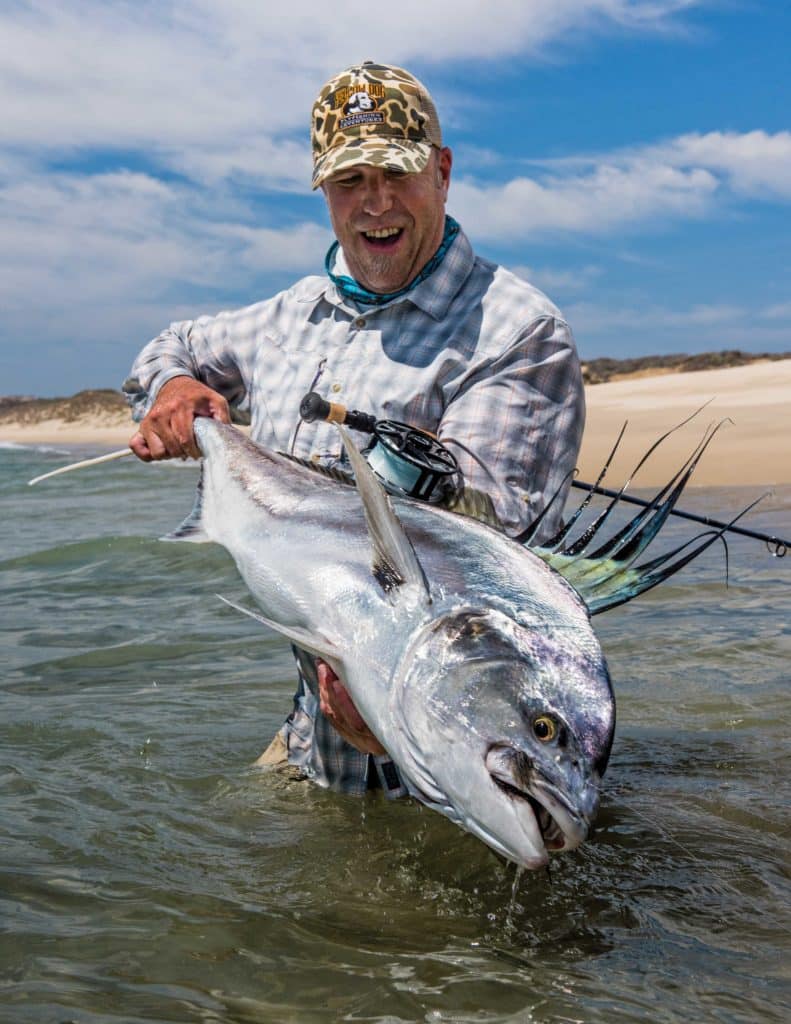
Rieser actually wrote the book Fly Fishing the Baja and Beyond. He recommends 9-weight fly tackle, at the minimum. Matching a quality saltwater reel with an adjustable drag and capacity for 300 yards of 30-pound backing with a full-length intermediate line will serve you well for roosters, dorado, jack crevalle and other targets. Shooting heads or sink-tip lines in classes IV to VI are best for offshore. High-density sinking lines, however, are needed for tuna, he says.
Read Next: Targeting Roosterfish On Fly
Picking a peak time is as easy as throwing a dart at the calendar. If it hits any month between April and November, you’re in. There was a Wednesday in mid-May when I sweated through an hour of a bare-knuckle bash with a striped marlin on stand-up gear, a fight I’ll never forget. It repeatedly ran, leaped, crashed and sounded, turning my back and arms to jelly. In the middle of the fight, a pod of porpoises showed up, raced the hooked marlin, then left.
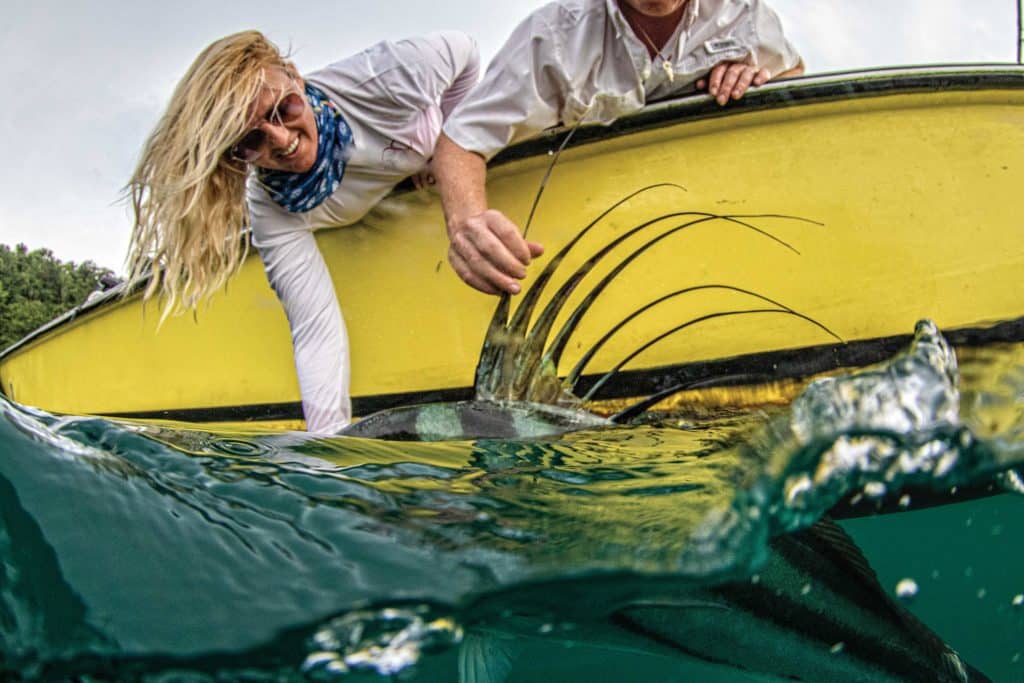
Later, a few miles away, we nosed the boat into 8 feet of transparent, inshore water and found roosters in the 15- to 40-pound range on a tear for 90 minutes straight.
Many anglers come to East Cape for the species variety. I come to be abused by roosters fit to crow about.
SWS Planner
What: Roosterfish, as well as dorado, striped, blue and black marlin, sailfish, yellowfin tuna, pargo, yellowtails, wahoo, swordfish, grouper, jack crevalle, sierra, amberjack, skipjack and more
Where: Sea of Cortez, East Cape, Baja Peninsula, Mexico
When: May into November for roosterfish; late May to October for billfish; June to November for dorado; July to August for wahoo
Who: Covered cruisers and open pangas can be booked by the day or week at most hotels. Many provide tackle, and have baitwells and experienced, English-speaking crews. Conventional and fly-fishing guides can be arranged, along with quad rentals for fishing miles of public beach.
Recommended Lodging:
Los Barriles
Hotels Palmas de Cortez and Playa del Sol
info@vanwormerresorts.com
877-777-8862
Buena Vista
Hotel Buena Vista Resort
info@buenavistaresort.mx
800-752-3555
La Paz
Marina Hotel
855-680-3239
Fishing Charters:
Mike Rieser, Baja Flyfishing Company
Joshua Martz, Pursuit Anglers
Leonard Phillips, Baja Pirates
East Cape Guides









